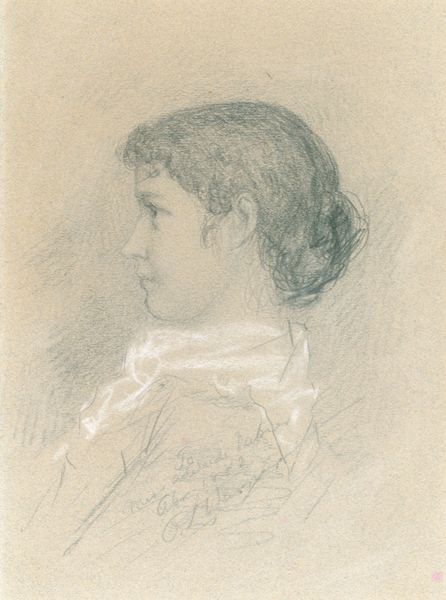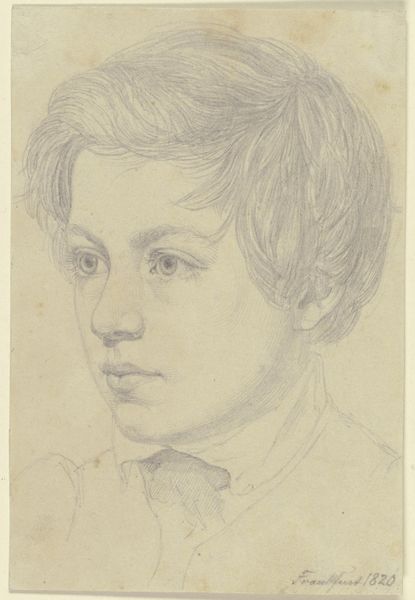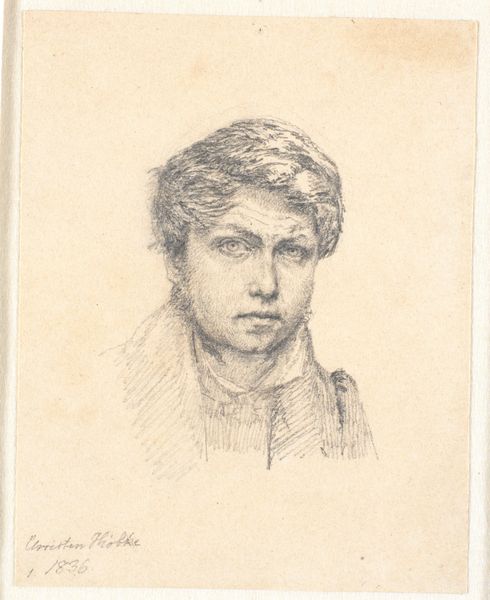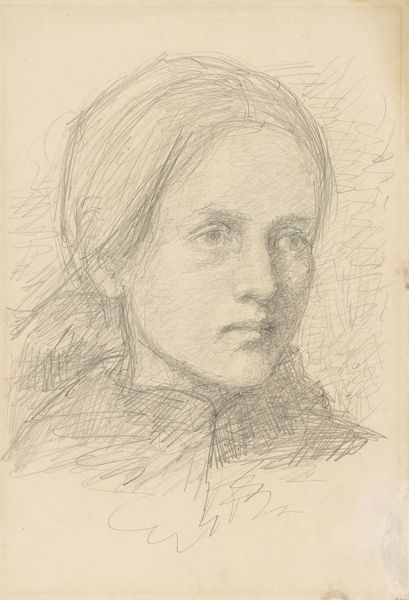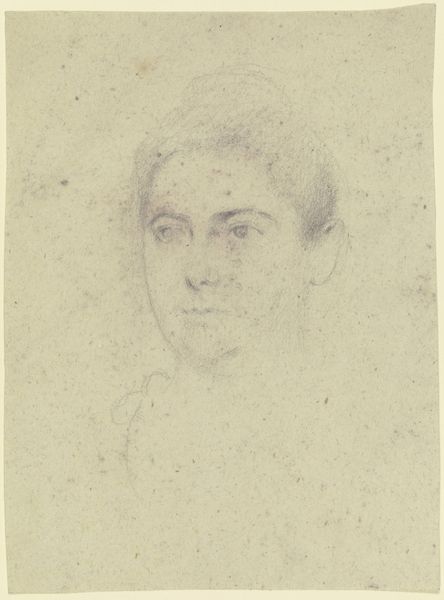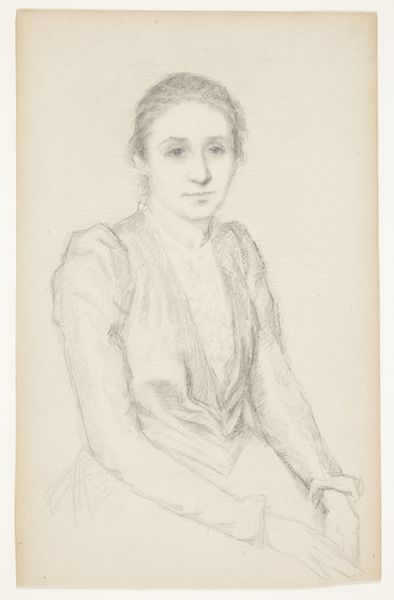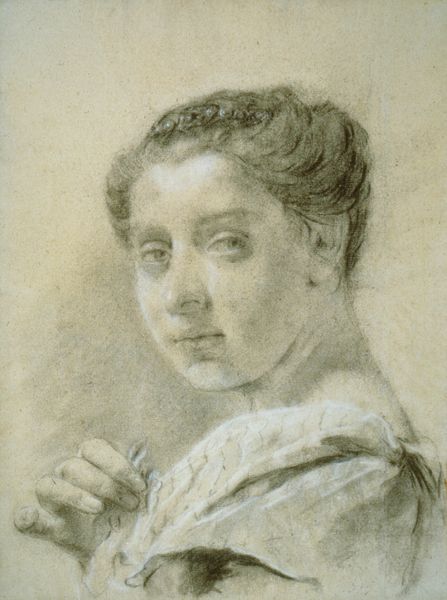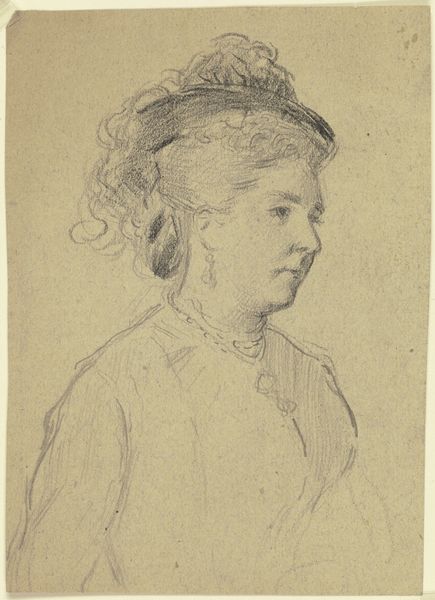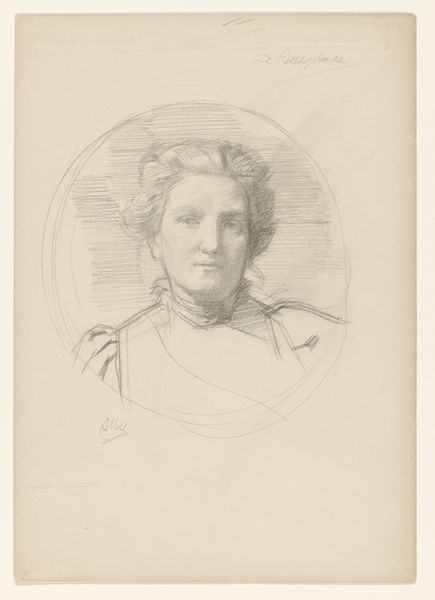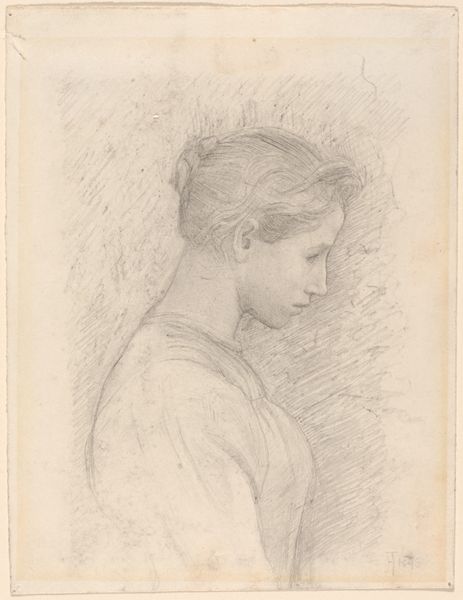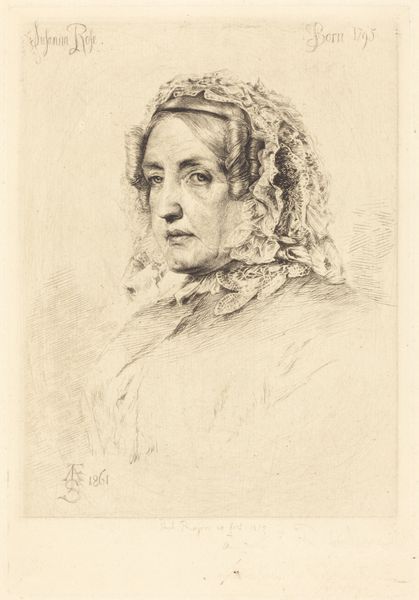
drawing, print, pencil
#
drawing
# print
#
impressionism
#
figuration
#
pencil
#
portrait drawing
#
portrait art
Copyright: National Gallery of Art: CC0 1.0
Editor: So, this is Alphonse Legros’ "Head of a Young Girl." It's a pencil drawing. It almost feels like a photograph with the details captured and warm sepia tone, despite being on paper. What do you see in this portrait? Curator: Immediately, I think about the materials available to Legros, and the labor involved. Pencil portraits like these were often commissioned, revealing insights into the aspiring middle class of the time and their access to art. Do you think it elevated portraiture or merely democratized it? Editor: That’s interesting! I hadn’t considered it in terms of accessibility, maybe a bit of both? Portraiture used to be for royalty, right? But what's significant about the *materials* used here specifically? Curator: Precisely! Pencil, unlike paint, allowed for quicker, more portable image-making. Think of the pencil itself – its manufacture and distribution enabled a broader public to engage in both art creation and art consumption. This specific print of the portrait opens it to even wider distribution. It transforms art from unique object to reproducible commodity. Editor: That makes sense. The 'making of' is as crucial as the image itself when considering the social impact. The choice of pencil democratizes art. Curator: Exactly. It also calls into question the hierarchy between 'high art' and craft. Is a meticulously rendered pencil portrait inherently less valuable than an oil painting, or does its accessibility give it a different kind of power? What are your thoughts? Editor: I hadn't looked at it that way. Thinking about the labor and means of production…it shifts my perception. It seems valuable on both fronts. Thanks for your input. Curator: Of course. And you made me rethink assumptions about classical artistic techniques and accessibility, too!
Comments
No comments
Be the first to comment and join the conversation on the ultimate creative platform.
